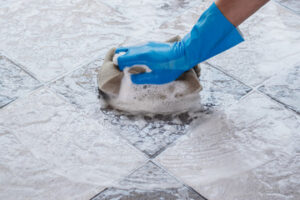Choosing the right policy depends on your goals and needs. A financial professional can help you determine your coverage requirements and explain the different types of policies available.
Several factors affect life insurance rates and premiums, including age and health. The younger and healthier you are, the lower your rates will be. For more information, click the Life Insurance Companies Las Vegas to proceed.

The peace of mind that comes with having life insurance is invaluable. It provides financial security and emotional reassurance for loved ones after an unexpected event. It also helps you plan for the future and create a legacy for your family. It can also be a good tool for business owners who want to safeguard their families’ financial well-being against unforeseen events.
Many types of life insurance policies are available to meet your needs. For example, term life insurance offers coverage for a specified period of time, such as 10 to 30 years. This type of policy can be useful for people who have specific financial obligations that will be paid off over a set period of time, such as paying off a mortgage or funding a child’s education. Alternatively, permanent life insurance policies offer a death benefit that will last your entire life, so your loved ones will receive a payout no matter when you pass away. Some permanent life insurance policies also allow you to build cash value, which is money you can use however you want.
You can purchase life insurance directly from an insurance company or through a broker. Some employers offer group life insurance as a benefit. Other options include a simplified issue policy that doesn’t require a medical exam or an instant-approval policy that uses quick online health questionnaires and algorithms to speed up the application process. Generally, the younger and healthier you are, the less expensive your life insurance will be.
When choosing a life insurance policy, it is important to select an appropriate coverage amount. This amount should be sufficient to cover your debts and expenses, as well as provide income replacement in the event of your death. It is recommended to consult with an experienced life insurance agent for guidance in this regard.
It is also important to name primary and contingent beneficiaries. Primary beneficiaries will receive a portion or the entire death benefit. Contingent beneficiaries will receive the proceeds of your policy if the primary beneficiary passes before you do. It is best to choose a financially responsible and trustworthy beneficiary, as they will be in the best position to manage your estate.
If you have a family, life insurance provides protection for those you love. If you die, your beneficiaries receive a financial payout, known as the death benefit, to help cover funeral expenses, debts, mortgage payments, tuition, and other living expenses. The money can also provide inheritance and legacy planning opportunities or support charitable causes you care about.
It’s important to consider your family’s needs when selecting a life insurance policy, whether you opt for a term or permanent plan. In addition to determining how much coverage you need, decide what your goals are for the policy — such as paying off the mortgage or helping fund your children’s college education. Then, consider other costs that could impact your family in the event of your death, such as medical bills and estate taxes.
Choosing the right life insurance beneficiaries is another crucial step to ensure the impact of your life insurance will be felt by the people you care about most. Beneficiaries are typically spouses or children, but you may also want to include a trust or other entities. Regardless of who you choose, it’s best to review your beneficiaries regularly, particularly after major life events like births, divorce, remarriage, or new jobs.
Many types of life insurance are available, including term life, whole life, and a hybrid policy that offers flexibility. Generally speaking, term life policies offer affordable coverage to meet your temporary needs, while whole life offers level premiums and strong guarantees, plus the ability to accumulate cash value. Hybrid plans combine the benefits of both, with a lower premium rate for the first few years and then a higher premium later on.
When deciding on the type of life insurance you need, keep in mind that you can customize your policy by adding riders. These provide additional benefits for an extra cost, such as the ability to skip a payment on the premium when you’re ill or to use some of your face amounts to pay for chronic or critical illness treatment. Your agent can help you determine which riders might be right for you.
Many life insurance policies offer tax-free benefits. This is especially true of whole life policies, which accumulate a cash value along with the death benefit. Each premium dollar goes into a fund that accumulates interest, and it is common for the cash value to surpass the amount of the total premium paid over time. This allows policyholders to take out loans or withdraw the money from the account without paying taxes on it, as long as it is used to pay for the life insurance coverage (and doesn’t go above the cost basis).5 However, outstanding loans that are not repaid will reduce the death benefit.
Normally, death benefit payouts are tax-free to the beneficiaries of the policyholder. This is one of the main reasons people purchase life insurance – to make sure that their loved ones are not left with a large tax bill when they pass away. The death benefits can be used to pay off credit card debt, medical bills, mortgage or car loan balances and other expenses that aren’t covered by the insured’s current income. They can also be used to cover funeral and final expense costs.
Another great aspect of life insurance is that it is usually a quicker way to get the proceeds to your beneficiaries than other types of property or investments. Life insurance death benefits can be delivered to your beneficiaries in a matter of weeks, as opposed to the months it can take for things like estates to go through probate.
Most life insurance plans, including whole life insurance, provide you with the option to borrow or withdraw against your cash value if needed. The portion of the life insurance policy cash value that is borrowed or withdrawn is typically taxed as regular income, but only if it is above your policy’s cost basis. The growth of any portion of the cash value that is above your cost basis is typically tax-deferred, and may be taxable upon withdrawal or surrender. Talk to your financial professional and a tax advisor about this in order to understand the specifics of your situation.
There are many different types of life insurance policies, and the type you choose depends on your goals. For example, a universal life policy offers a lifetime of coverage and can build cash value. However, it is less flexible than whole-life or variable-life policies, which allow you to make more changes to your policy without losing insurance protection.
In addition to the amount of coverage, you must also consider the cost of the policy. There are a number of factors that influence the premium, including your health, age, and lifestyle. For example, dangerous hobbies or occupations can cause you to have higher life insurance rates. If you have a preexisting condition, it will also increase your premium.
To determine whether life insurance is right for you, start by calculating your current financial goals and your family’s expenses. Then, subtract the amount that your family would need to cover these expenses in the event of your death. It is important to take into account debt, mortgages, children’s education and other major expenditures.
Once you have a clear picture of your needs, you can begin the application process. The insurer will ask you a series of questions about your health, job, and lifestyle and may require you to undergo a medical exam. Some companies offer no-exam life insurance, which uses online health questionnaires and algorithms to speed up the approval process. However, you should note that these policies are often less comprehensive in terms of coverage and can be rejected if you make a material misrepresentation.
Another option for life insurance is a variable universal life policy, which allows you to customize the terms of your policy by adjusting the death benefit and premium payments. This flexibility is ideal for people whose circumstances and financial requirements might change over time. It also provides a good hedge against inflation. Some policies even include a securities component, which can provide you with a potentially higher rate of return.
